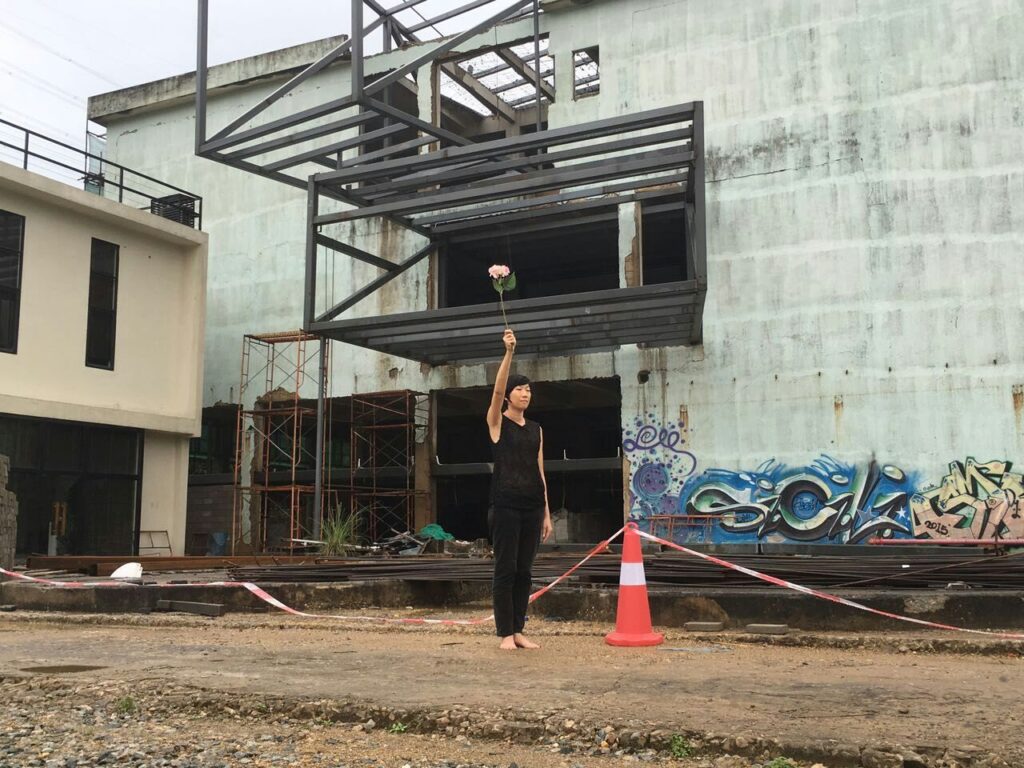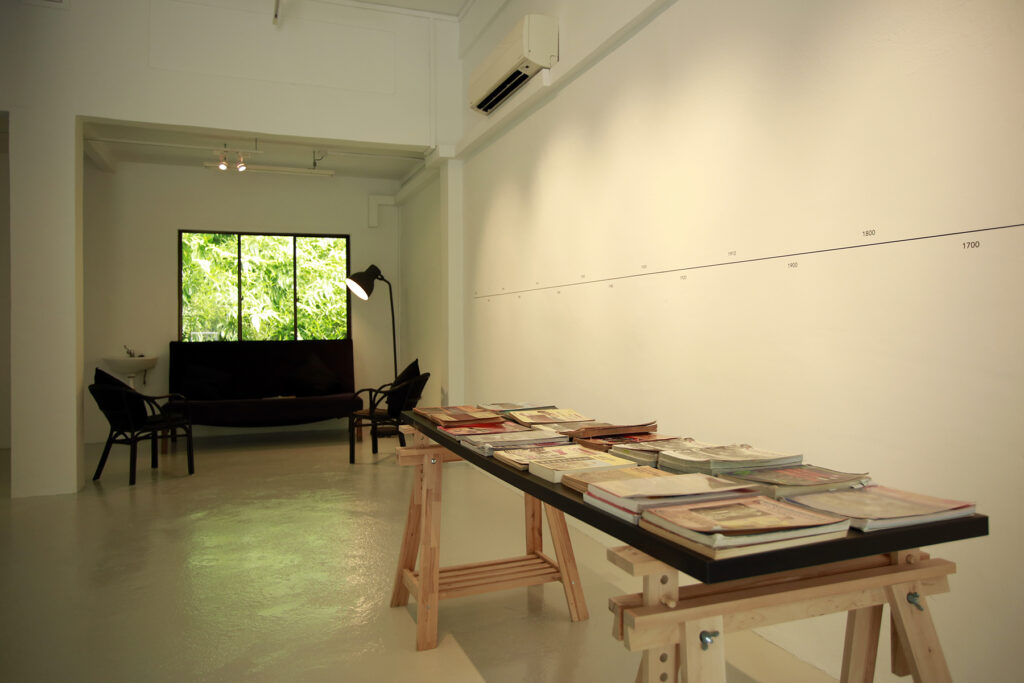We are Present (2019-ongoing)
In 2012, the government informed the vendors of Sungei Road Market to move out as the land they were occupying would be developed, 5 years later, a notice of eviction was officially served and the vendors were given 3 months to vacate. 1 week to the dateline of 10 July 2017, 60% of the vendors interviewed by the Save Sungei Road Campaign were still uncertain about how to adjust to life after Sungei Road Market. The poor, the sick and the aged have few resources to innovate and strike a new path. The lifeline of free rental at Sungei Road had been pulled, and the placebo offered to ease the pain only caused heartache: for surely only those who have the capital can take up the offer to continue their business in a shop. That no one is left behind proves to be hollow for those who are.
Disempowered, the voices of these vendors are seldom heard. Even when they speak, they are still not heard, not only by the authorities which has decided on the fate of the market without consulting them, but also by the mainstream society that cannot relate to them because of their age, their lack of proficiency in English and their way of life. Yet these vendors in my many conversations with them exhibited a pride in their independence and a rebelliousness in continuing a way of life that they have also chosen.
My artwork, We are Present, is a video installation made up of 10 individual channels featuring a long interview with a Sungei road market vendor each. Over a period of 4 months, I have been shooting the interviews at the Kreta Ayer weekend market with the assistance of a friend cum videographer, Sharmeen Sifar. In these long interviews, vendors talked about their lives, their life choices, worldviews and what is
the significance of the Sungei road market to them. Each interview varies in length from as short as 30 minutes to as long as 3 hours. I have done minimal editing to the interviews to give them the space to speak their mind and tell their stories.
Following the time-honoured practice of the vendors, I am adopting a guerilla
approach to ‘occupy’ a space in shows, events and festivals happening in Singapore in 2019/ 2020 as the vendors have done and some are still doing in occupying space to continue their trade. It is my hope that the video installations can make visible the presence of a group of the less advantaged who co-exists with us in our society but
occupies a precarious margin. Our idea is to loop the interviews for the duration of the opening hours of your gallery so that their stories keep going. We cannot hope to do anything for the less advantaged if we do not in the first place listen to their stories.
In tandem with the video installation, I propose to conduct artist talks or even a workshop to discuss the issues relating to identity, social inequalities, identity, marginalisation and social change.
This is an independently funded project.

The Unforgetting Space (2017-ongoing) in the Singapore International Festival of Arts (2017)
In a speculative near future, the history of Singapore faces the fate of being literally pulped. Conceived as a “protest against forgetting” (Eric Hobsbawn), this participatory installation by Tan Biyun features old textbooks dating back to the seventies that she has collected in hope of repurposing them as triggers for an “unforgetting” of history. Audiences are invited
to use the typewriters provided to respond to the textbooks, either by selecting and retyping a historical episode described in the textbooks or by drawing on their own sources should an episode be found to be missing or misrepresented. The work hopes to build from
the rubble a future history that offers a more inclusive understanding of the past so as to expand the possibilities of the future.
Future Trees and the Pulp of History by Ho Rui An, Artist-in-Residence, and Tan Biyun (Singapore), artist. A combined presentation by Artist-in-Residence Ho Rui An and artist Tan Biyun, Future Trees and the Pulp of History explores the artists’ shared interests in participatory democracies, historical archives, and speculative futures. Their works engage various strategies to rearrange existing narrative structures and activate new forms of political imagination.
For the first time in Singapore, Ho exhibits the documentation of Screen Green (2015-16), a lecture performance that examines the politics of screening and greening in the city-state. Screen Green has been produced for the exhibition Public Spirits, currently running at the Centre for Contemporary Art Ujazdowski Castle, Warsaw, Poland. Beginning with an observation of the lush greenery often seen as backdrop of political discourse in Singapore, the lecture addresses this botanical green in relation to the “green screen” normally used in cinema, using this uncanny connection to examine the politics of screening and greening in the city-state. Central to the work is the contention that the numerous green spaces in Singapore act as giant green screen studios designed to solicit the participation and imagination of the masses in order to limit and modulate their articulations.
Against the “horticultural futurism” discussed in Ho’s lecture, Tan posits a speculative near-future where the history of Singapore faces the fate of being pulped. Tan conjures a scenario where students, sick of the propaganda purveyed in their textbooks, have abandoned the study of History altogether, prompting the Ministry to recall and destroy all textbooks in circulation. Conceived as a “protest against forgetting” (Eric Hobsbawn), Tan’s The Unforgetting Space seeks a more inclusive understanding of the past and triggers the process of reclaiming the writing of history from the authorities. This participatory project features several textbooks dating from the 1970s and two old typewriters on which audiences are invited to retype historical episodes selected from the books. They are also encouraged to contribute a text based on their own sources should a historical episode be found to be missing or misrepresented.
Launched on occasion of Gillman Barracks’ Art Day Out!, Future Trees and the Pulp of History is open to the public from 12 November 2016 to January 2017, every Saturday and Sunday, 12.00 to 7.00pm.
http://ntu.ccasingapore.org/events/future-trees-and-the-pulp-of-history/

Waiting for Butterflies II (2015) , Performance Art in Guyu Action Performance Festival (2015), Shenzhen, China
Waiting for Butterflies I (2014), Performance Art in Guyu Action Performance
Festival (2015), Xian, China
乘几何时,蝴蝶不见了?
是喧闹的城市,粗心的人,
或是目眩的发展,我们失去了生命的重量?在钢骨水泥的灰,我忆起多彩的蝴蝶。
Where have the butterflies gone in the shadow of the rising concrete?


